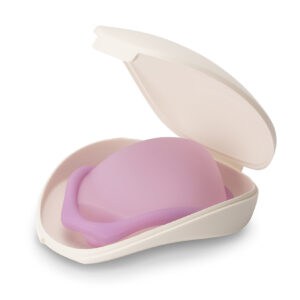
So you’ve welcomed your little bundle of joy, and between the sleepless nights, diaper changes, and figuring out this whole breastfeeding thing, someone mentions the “B” word—birth control. Wait, what? Already?
If you’re like most new moms, contraception probably isn’t top of mind when you’re running on three hours of sleep and wondering if you’ll ever feel human again. But it’s important to consider your breastfeeding birth control options—maybe even before your baby is born. Then you can speak to your healthcare provider and figure out your options before that new bundle of joy even comes along.
When Can You Even Think About Birth Control Again?
First things first—timing matters. Most healthcare providers recommend waiting until your six-week postpartum checkup before starting any new birth control method. This gives your body time to heal and your hormones a chance to settle into their new rhythm.
Did you know that if you’re exclusively breastfeeding, you might have some natural protection through something called the Lactational Amenorrhea Method (LAM)? Basically, if you’re breastfeeding around the clock, haven’t gotten your period back, and your baby is under six months old, pregnancy is pretty unlikely. The keyword here is “exclusively”—we’re talking no formula, no pacifiers, and nursing every few hours, day and night.
The Hormone Situation: Why It Matters When You’re Nursing
There are many traditional birth control methods that contain hormones that can mess with your milk supply. According to the American College of Obstetricians and Gynecologists (ACOG), birth control pills containing estrogen can reduce milk production for some women.
Think about it—your body just spent nine months growing a human, and now it’s working overtime to feed that human. The last thing you want is a birth control method that interferes with that process, right?
Hormone-Free Birth Control Options That Play Nice with Breastfeeding
Let’s talk about the methods that won’t mess with your milk supply or require you to remember a daily pill when you can barely remember if you brushed your teeth.
Barrier Methods: Your Hormone-Free Friends
Condoms: The most obvious choice, and they have the bonus of protecting against STIs. No hormones, available everywhere, and your partner can take responsibility too. Win-win-win.
Diaphragms: What is a diaphragm? A diaphragm is a soft, flexible barrier that covers your cervix and prevents sperm from reaching your eggs. Modern diaphragms like the Caya contoured diaphragm are designed specifically for the female anatomy.

Caya is a soft, flexible barrier that covers your cervix and prevents sperm from reaching your eggs. What makes it perfect for breastfeeding moms?
- 100% hormone-free: Won’t interfere with your milk supply at all
- Woman-controlled: You decide when to use it—no daily pills to remember
- One size fits most: No awkward fitting appointments when you’re already juggling doctor visits
- Reusable for up to 2 years: Cost-effective when you’re budgeting for diapers
- Discreet and portable: Fits in a small case that’s easy to toss in a diaper bag
Long-Acting Reversible Options
Hormonal IUD considerations: Some IUDs contain hormones, but they release them locally in small amounts. Many breastfeeding women use them successfully, but it’s definitely worth discussing with your healthcare provider.
Copper IUD: This little T-shaped device is hormone-free and can last up to 10 years. It’s like the “set it and forget it” of birth control.
What About Those Postpartum Hormones?
Let’s be honest—your hormones post-pregnancy can be kind of wild. And it’s different for everyone. Between the baby blues, potential postpartum depression, sleep deprivation, and your body recovering from pregnancy, adding more synthetic hormones to the mix might not be the best idea.
The American Academy of Pediatrics notes that while hormonal contraceptives are generally considered safe during breastfeeding, some women prefer hormone-free options to avoid any potential impact on milk supply or their emotional well-being.
Making the Decision: What Feels Right for You?
Every mom’s situation is different. Maybe you’re planning to breastfeed for six months, or maybe you’re thinking two years. Maybe you want something super low-maintenance, or maybe you prefer something you can control day by day.
What to consider:
If you want maximum control: Barrier methods like Caya give you complete control over when and how you use birth control. No hormones, no daily commitment, just protection when you need it.
If you want to “set and forget”: IUDs might be your best friend. Just remember to discuss the hormone-free copper option with your provider.
If you’re not sure about anything: That’s totally normal! You can start with condoms and barrier methods while you figure out what works for your new life.
Birth Control Effectiveness: What You Need to Know
When it comes to preventing pregnancy, all birth control methods have different effectiveness rates:
Typical Use vs. Perfect Use
- Condoms: 85% effective with typical use, 98% with perfect use
- Diaphragms (like Caya) with spermicide: 88% effective with typical use, 94% with perfect use
- Copper IUD: Over 99% effective
- Hormonal IUD: Over 99% effective
What’s the difference between typical and perfect use? Perfect use means using the method exactly as directed every single time. Typical use accounts for real life—sometimes you forget, sometimes you’re not perfect about it.
Want to learn more about hormone-free effectiveness? Check out our post on Why More Women Are Choosing Hormone-Free Birth Control in 2025

Practical Tips for New Moms
Start the conversation early: Bring up birth control with both your partner and your healthcare provider before your baby is born. You can discuss birth control options, nursing plans, and just as importantly, talk about when or if you want additional children and what that means in terms of pregnancy prevention.
Consider your lifestyle: Are you the type who’ll remember to use a barrier method every time, or do you need something more foolproof?
Think about your timeline: How long do you want to wait before potentially having another baby?
Factor in your partner: What are they comfortable with? Can they be part of the solution?
Ready to learn more? Visit our Get Caya page to explore this hormone-free option.
The Bottom Line
You’ve got enough on your plate without stressing about birth control that doesn’t fit your life. Whether you choose a barrier method like Caya, go with an IUD, or stick with condoms for now, the best birth control method is the one you’ll actually use consistently.
And remember—this decision isn’t permanent. You can try one method and switch if it doesn’t work for you. Your body, your baby, your choice.
The most important thing? Talk to your healthcare provider about what makes sense for your specific situation. They know your medical history and can help you navigate the options that are safest for both you and your baby.
You’ve already proven you can handle the incredible feat of growing and birthing a human. Choosing the right birth control? You’ve totally got this.
For more information about contraception and breastfeeding, visit the American College of Obstetricians and Gynecologists
Learn more about how Caya works on our How to Use Caya page. Or, check out our FAQ section for answers to common questions about Caya.
The information included in this blog post is accurate as of publication. For the most current details about Caya, or if you have specific questions about your contraception options, please visit our FAQ at Caya.US.com or consult with your healthcare provider.


